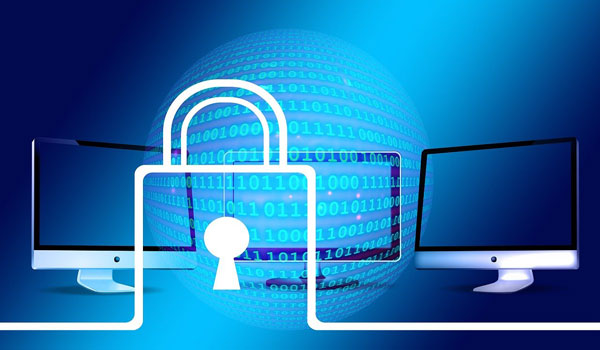A computer virus comes from the same place that the flu virus does: it is extremely infectious, you feel tired, you need more rest and relaxation than regular, and it is difficult to conduct even the most basic daily tasks.
Similarly, a computer virus degrades your computer’s efficiency by copying itself and propagating throughout the web browser.
A virus can corrupt initiatives, remove information, and reinstall or remove your disk, resulting in decreased productivity or even mechanical failure.
Attackers can also use malware to gain personal data in order to steal or demolish it. A virus infects a desktop in a variety of ways, the majority of which involve uploading malicious software — either knowingly or unknowingly.
Illegally downloaded music or movies, pictures, bonus rounds, and taskbar, as well as malware emails with accessories, are prevalent offenders.
Viruses can also be uploaded by visiting phishing software or by clicking on links or advertisements that lead to an is alone.
Integrating to an afflicted external drive (such as a USB) can also implement malicious code into your scheme.
It could show some signs such as
-
Processing speed is slow
-
Closing down or relaunching issues
-
Files that are missing
-
Computer collapses and/or errors on a regular basis
-
Surprising pop-up windows
-
Various apps (toolbars, etc.) that occur without your permission
-
Overstressed hard drive (the fan makes noises and appears to be buzzing and working hard even when you’re not doing anything)
-
Emails that give on their own from your accounts
-
Search engine stuttering or redirects
-
Antivirus software or firewalls that aren’t working properly.
Malware viruses are so common in the news that many of us are worried about the damage they can cause to business owners if their security is breached.
Despite this, the majority of us have been infected with malware at some level in our professions.
If we’re lucky, the virus has primarily been a menace, but malware has the ability to impact business owners and any confidential material they may be in charge of. It is critical to protect both yourself and your system.
But how would you know if you’ve been infected with malware? Here are some of the most important danger signs.
1. Your computer has significantly slowed down, frozen, or crashed on a regular basis.
For some computer systems, this is simply an indication of their age. However, a slow scheme, or one that regularly freezes or crashes, is often an obvious sign of malware.
Computer viruses typically operate in the backdrop of your scheme, trying to interfere with other programs and consuming computing power.
If you notice this problem, especially on a new PC, it’s time to have it checked out.
2. You are not able to log in.
Most users are now aware of ransomware as a result of recent malware headlines. Most cryptologies projects lock you out of your own system or prevent you from accessing certain files until you pay a fee.
Even if you do not receive a ransom note, an abrupt lack of ability to log into your desktop could be the result of ransomware detection.
3.Abnormal performance issues continue to appear.
Many viruses will send errors in order to persuade an unsuspecting user to grant additional system authorizations or approve additional downloads.
These texts will imitate your computer’s error messages, but there will frequently be something wrong
with the text box’s styling or phrasing. If you don’t realize the text, or it seems odd, try Googling the actual language of the text to see if it is affiliated with any malicious software.
Even if you can’t find any of it, a strange, recurring error is a reason for taking your desktop to a professional.
4.Random noises
Infected machines are frequently trained to react to uncontrollable events with an audio signal.
If you’re having heard invisible trumpets and bells from your laptop, it could be infected with the virus or malware.
5.Connections to unknown websites
When your valid antivirus notifies you that implementation is attempting to relate to a website you’ve never noticed if, this is another sign of infection.
In particular, your desktop does not initiate contacts; they must be initiated by someone. If you did not initiate these linkages, malware may have done so for you.
How to stop
1.Keep your installed programs up to date
One of the most common ways viruses enters a network would be through security flaws in current applications. As a result, the first step in preventing your computer from becoming infected is to ensure that you use it.
Adware, spyware, and malware are programs that are designed to track what you do online and collect information about you.
2.Install only one antivirus program.
It may appear prudent to have numerous levels of antivirus software on your desktop, but “less is more” in this case.
If you have upwards of one virus protection software program configured on your machine, they may conflict because each believes the other is a virus.
At greatest, this can lead to limited antivirus software, and at worst, malicious attacks.
3.Make virus scans automatic.
You don’t have to be present when your computer runs a virus scan. Most modern antivirus software includes automation options that enable you to schedule when the computer will run its virus scan.
By scheduling the procedure for a moment when you wouldn’t need to use the computer — such as when you’re falling asleep — you can ensure that your connection is safe without interfering with your nap.
Malware can slow down your computer’s processing speed. A virus can weaken your performance of the computer or programming to the point where you can no longer use it.
Adware, spyware, and malware are programs that are designed to track what you do online and collect information about you.
Some viruses attempt to collect personal information about you in order to commit identity theft or fraud.
Related: How to Use Your Laptop as a Desktop Computer


